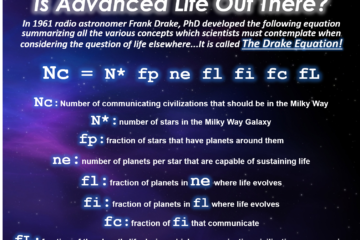Since joining the Raleigh Astronomy Club in late 2006, I have grown increasingly more involved in Astronomy outreach. I find sharing my knowledge of Astronomy, the night skies and celestial observing to be quite rewarding as well as very enjoyable.
While on vacation just a few weeks ago I came across a small plaque for sale at a gift shop, it said “A night under the stars calms the soul.” To a certain extent it is that sentiment that drives me to continue my outreach activities. However there is one aspect of outreach activities, especially around public observing sessions, that is less calming for my soul as the provider of a brief glimpse into the vastness of the universe.
Specifically I’m referring to the experience at the telescope as well the time waiting in line for a peek through the telescope. It could be that parent that has always wanted to see Saturn but his children will not stand still long enough for him to get a good long view. Or it is the child that is bubbling over with excitement to finally see the Orion Nebula but cannot seem to get her eye aligned just right over the eyepiece. Or it could be that person that after waiting for 10 minutes in line for the largest scope feels rushed to take a quick peek at the Whirlpool Galaxy and not taking the time to notice you can see detail in the spiral arms. How can we improve the observing experience for these people?
Often times during well attended public observing sessions, I find that I’m limited to only 1 or 2 targets since the people waiting in line wanted to see Jupiter even though the scope has been pointed at Jupiter for 90 minutes. Is there nothing I can do to provide a more diverse set of objects for public observing?
Should these issues be dismissed as just “the nature of the beast” when it comes to public observing sessions, or is there something we can do about it? The easiest solution is to get more telescopes. However it can be difficult to get other club members or amateur astronomers to volunteer their time. I have also tried bringing 2 telescopes to observing sessions but I’ve realized it’s just too difficult for one person to direct 2 telescopes especially if one or both do not track. So what is the answer?
Well, I think I have come across an excellent tool for public observing and it’s called Video Astronomy or as some others have called it Electronic Assisted Astronomy. This is where a specialized astronomy video camera replaces the eyepiece, much like in Astrophotography. However instead of capturing data for hours at time and then more time at home processing the data into single images, in video astronomy the data from the camera is feed to video screen or laptop computer for all to see. These cameras are much more sensitive than the human eye and can display on the screen, in real time / almost real time, objects in color and objects that we would not be able to view just with a telescope and eyepiece.
With a video astronomy you can share a real time view with multiple people at the same time. Additionally, the view they will see will have more detail and more color than the view from the eyepiece. Below is a video that I captured from a recent public observing session sponsored by our local planetarium. As noted, I’m still working thru the settings of the camera to keep the color from being washed out when stacking.
During this session 2.5 hour session I spent the first hour or so on Saturn providing views thru the eyepiece as normal; I estimate I was able to show off Saturn to about 50 people in that hour. At times there were easily more than 25 people in line to look through my telescope. I then switched the video camera and was able to show off The Whirlpool Galaxy, The Sombrero Galaxy and The 2 of the Leo Triplet galaxies. I was able to spend more time talking about the objects and going into more detail about what people were looking at as well as answering questions from the crowd. I must have had an additional 130 people stop and view the show from my laptop in that last 90 minutes of the session with no long lines.
Will Video Astronomy / Electronic Assisted Astronomy replace the traditional viewing through the eyepiece? Unlikely, there is nothing like the connection one is able to achieve when the photon from that distant object bounce around through the telescope and into your eye. However for outreach, video astronomy represents a wonderful tool that can broaden and improve the public observing experience. For more information on video astronomy check out the Electronically Assisted Astronomy sub-forum on CloudyNights or the My Video Astronomy Camera page on my site.
Clear & Steady Skies!
-Mike


